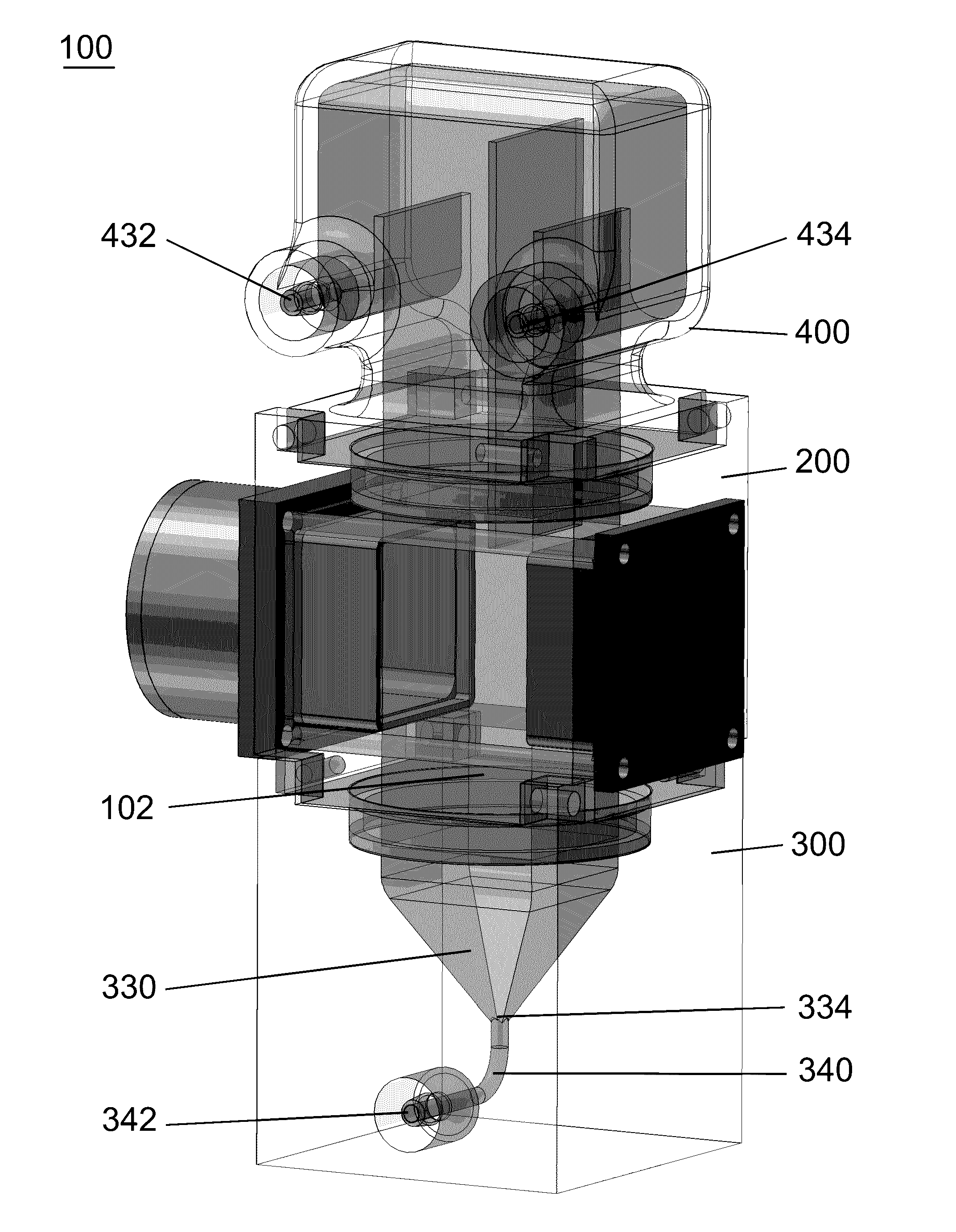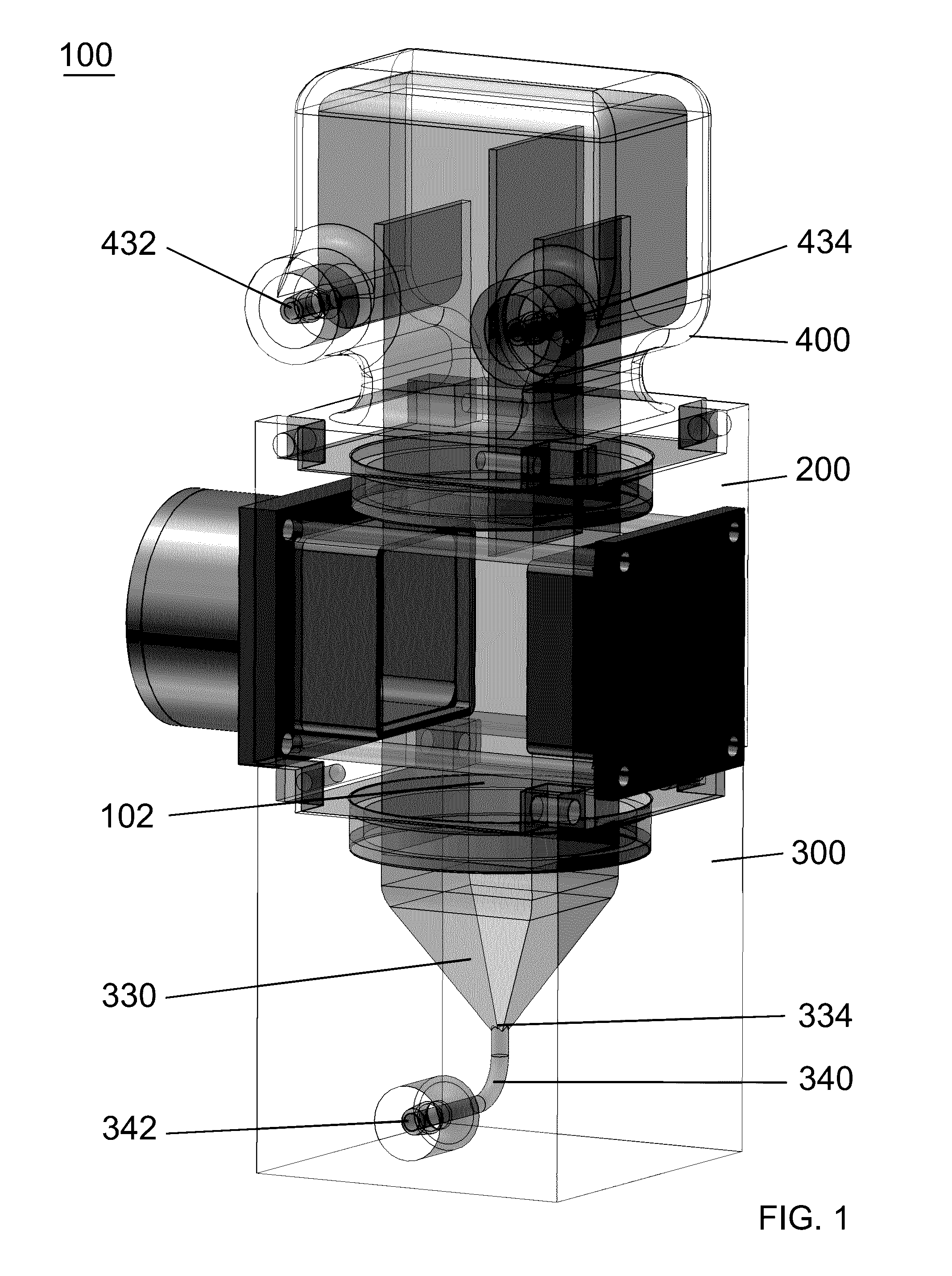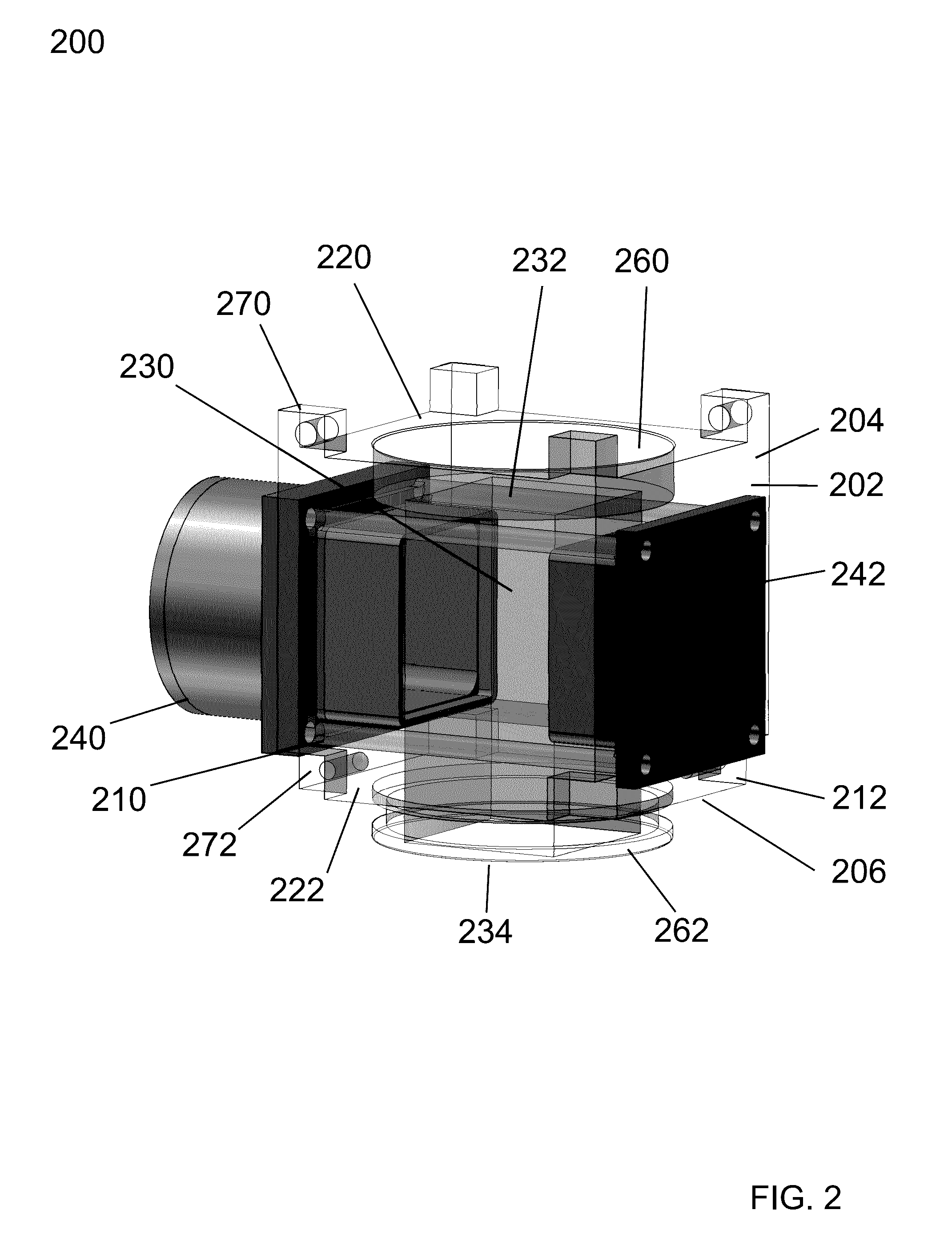Acoustophoresis device with modular components
a technology of acoustophoresis device and modular components, which is applied in the direction of mechanical vibration separation, filtration separation, separation process, etc., can solve the problems of complicated work of physical filters and limited efficacy of conventional acoustophoresis devices
- Summary
- Abstract
- Description
- Claims
- Application Information
AI Technical Summary
Benefits of technology
Problems solved by technology
Method used
Image
Examples
example 1
[0165]The acoustophoretic separation process was compared to depth flow filtration (DFF). First, a baseline of DFF capacity was obtained by performing two rounds of clarification, a primary clarification and a secondary clarification. The setup for this baseline is illustrated in FIG. 36.
[0166]The pressure drop was measured during the two rounds. The separation apparatus was operated at 145 LMH (liters / m2 / hour). The pressure was measured at three different locations P1, P2, and P3. Located between each set of sensors was a filter. The filter used during the primary clarification was a DOHC filter, and the filter used in the secondary clarification was a XOHC filter, both available from Millipore.
[0167]A mixture of CHO cells and culture media were flowed through the filters, and the permeate was then collected in a tank. The CHO cells were removed by the filters. The feed had a tumor cell density (TCD) of 6.34×106 cells / mL and a turbidity of 815 NTU. The final permeate in the third t...
example 2
[0169]Next, the two-step DFF described in Example 1 was compared to a two-step clarification process in which the primary clarification was performed by acoustic wave separation (AWS) and the secondary clarification was performed by DFF. This is described in FIG. 37.
[0170]As indicated there, in the two-step DFF, each filter had an area of 11 m2. Each filter was operated with a pressure drop of 7.5 psig. The volumetric throughput (VT) at 7.5 psig (VT7.5) was 84 L / m2 for each filter.
[0171]The acoustophoretic system used to perform the AWS was made up of three acoustophoretic devices as illustrated in FIG. 8 and linked in series. The transducer in each device was 1 inch by 1 inch. The system had a total acoustic volume of 49 cm3. The AWS system was paired with a DFF filter having a total area of 6 m2. Because there is no pressure drop in the AWS system, the DFF filter could be operated at a pressure drop of 15 psig, resulting in a VT15 of 160 L / m2.
[0172]The feed had a tumor cell densit...
example 3
[0174]The same experiment as described in Example 2 was performed again, but with a higher cell density. The feed had a higher TCD of 15.6×106 cells / mL and a turbidity of 3608 NTU, and 68% cell viability. This is described in FIG. 38.
[0175]The two-step DFF process used filters of 38 m2 and 17 m2, respectively. As indicated, the VT7.5 was 26 L / m2 for the primary clarification and 58 L / m2 for the secondary clarification. In the AWS-DFF process, the AWS system had only two acoustophoretic devices in series (not three as in Example 2), with a total acoustic volume of 33 cm3. The DFF filter had a total area of 11 m2, and a VT15 of 85 L / m2. The feed rate to the acoustophoretic system was 8 kg at 2.5 liters per hour (LPH).
[0176]The results for the primary clarification using the AWS system are shown in FIG. 38. The acoustophoretic system achieved 94% TCD reduction, 91% turbidity reduction, and 92% recovery of protein. The graph at the bottom left is percent reduction versus time, and shows...
PUM
| Property | Measurement | Unit |
|---|---|---|
| angle | aaaaa | aaaaa |
| angle | aaaaa | aaaaa |
| angles | aaaaa | aaaaa |
Abstract
Description
Claims
Application Information
 Login to View More
Login to View More - R&D
- Intellectual Property
- Life Sciences
- Materials
- Tech Scout
- Unparalleled Data Quality
- Higher Quality Content
- 60% Fewer Hallucinations
Browse by: Latest US Patents, China's latest patents, Technical Efficacy Thesaurus, Application Domain, Technology Topic, Popular Technical Reports.
© 2025 PatSnap. All rights reserved.Legal|Privacy policy|Modern Slavery Act Transparency Statement|Sitemap|About US| Contact US: help@patsnap.com



